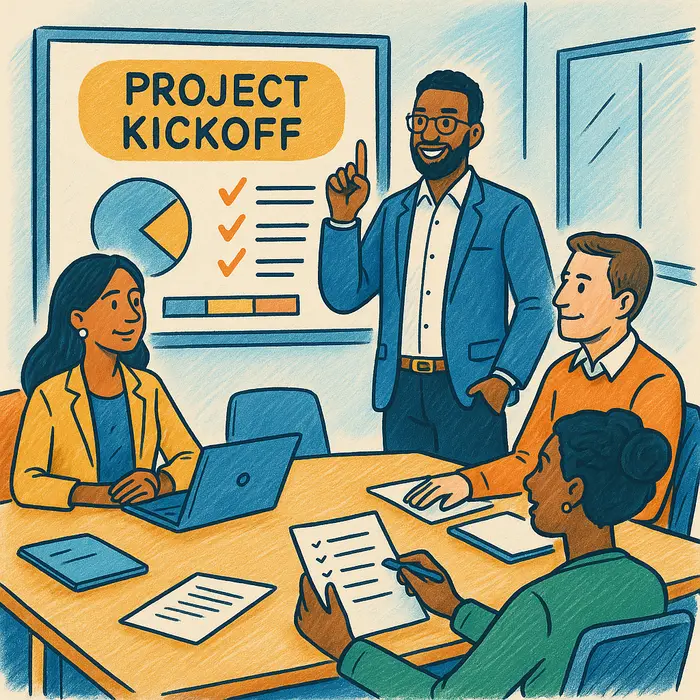The start of a project sets the tone for everything that follows. A strong kickoff isn’t just a formality—it’s your chance to align the team, clarify goals, and build momentum.
Here’s how to run a project kickoff that builds confidence and keeps everyone moving in the same direction.
Why Kickoffs Matter
A well-run kickoff:
- Aligns everyone on purpose, scope, and roles
- Surfaces questions and assumptions early
- Builds trust and energy
- Reduces miscommunication down the line
What to Do Before the Kickoff
1. Clarify the Project’s Purpose
Be ready to answer:
- Why are we doing this?
- What problem does it solve?
- What does success look like?
2. Map Stakeholders and Roles
Know who’s involved, what they care about, and how they’ll contribute. Use a RACI matrix if needed.
3. Draft a Rough Timeline or Milestones
You don’t need every detail, but share key dates and phases to anchor expectations.
4. Prepare an Agenda
Keep it focused and interactive:
- Introductions (if needed)
- Project overview
- Goals and scope
- Timeline and roles
- Risks or constraints
- Next steps and Q&A
During the Kickoff: Run It Like a Leader
1. Set the Tone
Be confident, clear, and inclusive. Your energy shapes the room.
2. Share the “Why” Before the “What”
Connect the project to bigger business goals or customer value.
3. Invite Questions and Dialogue
Encourage honest discussion, not passive agreement. Use prompts like:
“What concerns should we flag now?” “Anything unclear about our goals?”
4. Highlight What’s Not Included
Clarifying scope boundaries helps avoid future confusion and scope creep.
5. Close with Clarity
Recap what was agreed, what’s next, and who owns what. Leave time for final questions.
After the Kickoff: Follow Through
- Share notes and key decisions
- Send action items with owners and due dates
- Keep momentum with quick wins or early check-ins
Summary: Start Strong to Finish Strong
A confident kickoff creates shared understanding, reduces future rework, and builds early trust.
You don’t need a long meeting or a fancy deck. Just a clear plan, thoughtful prep, and a willingness to listen. That’s how great projects begin.
